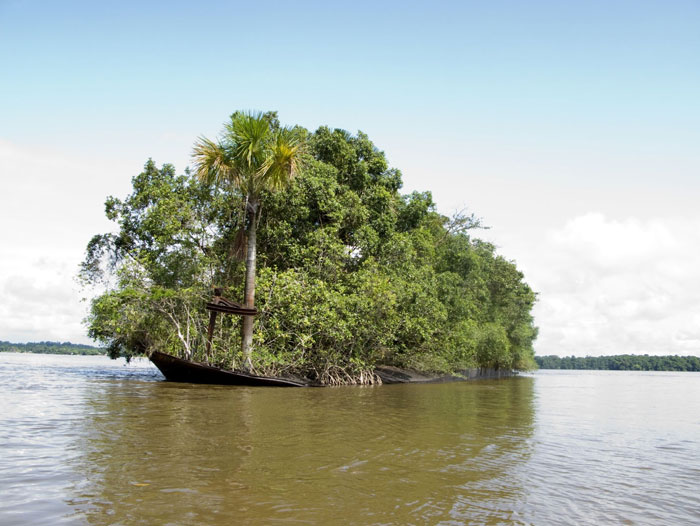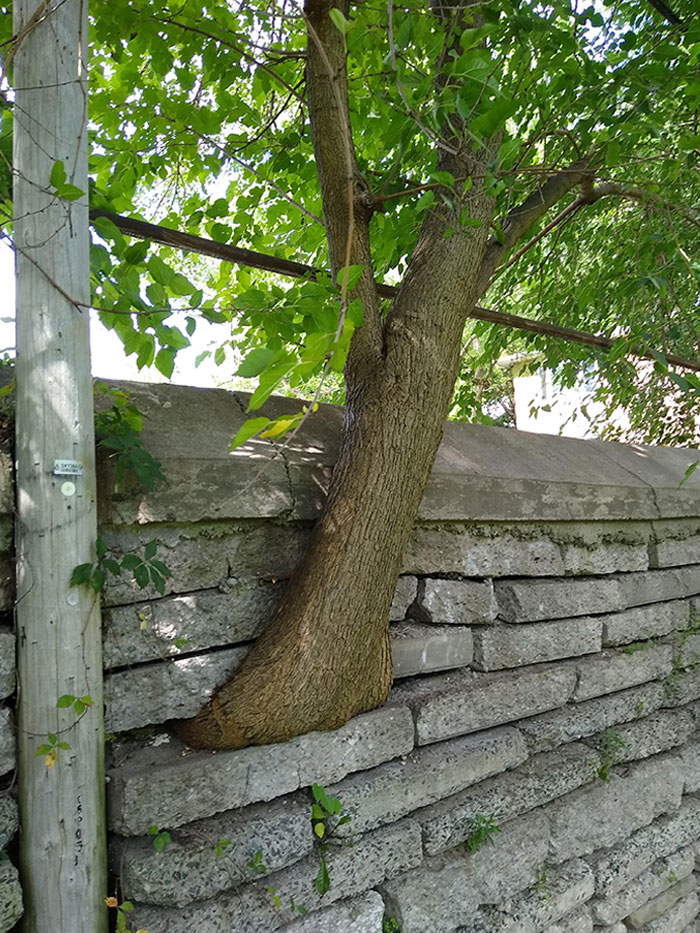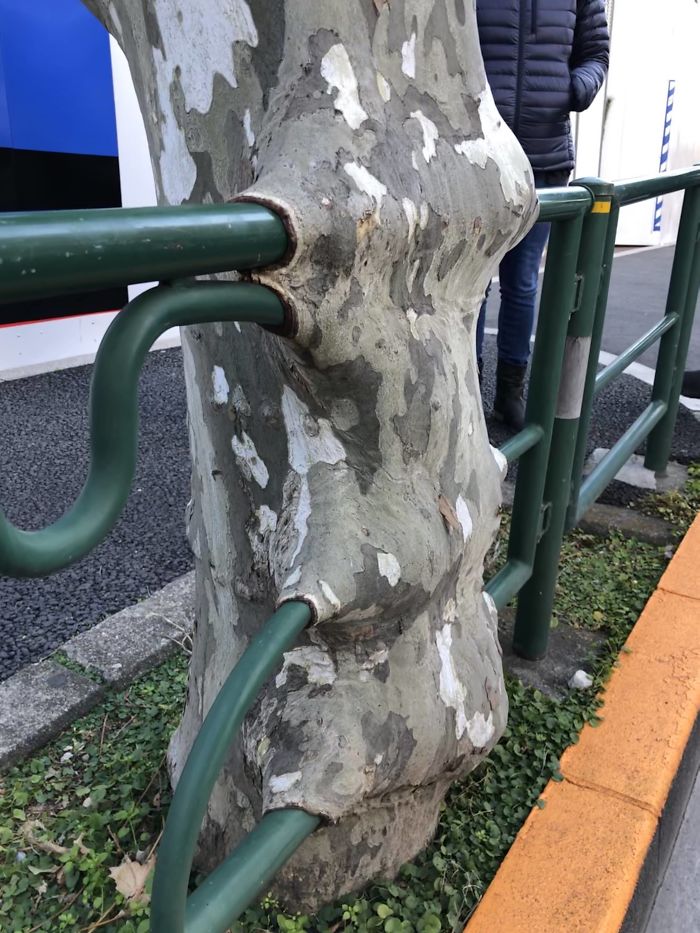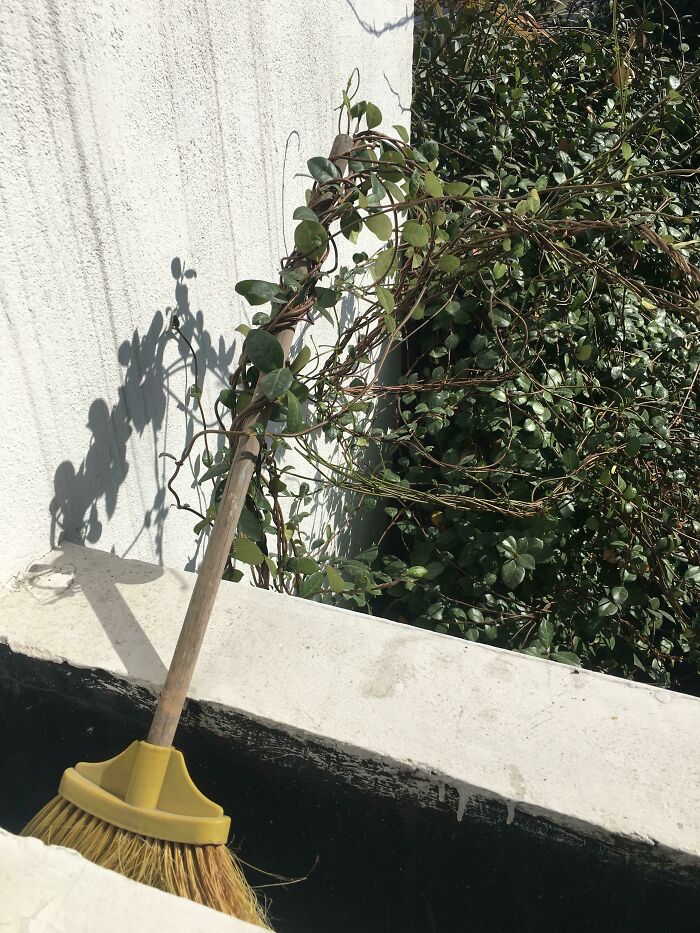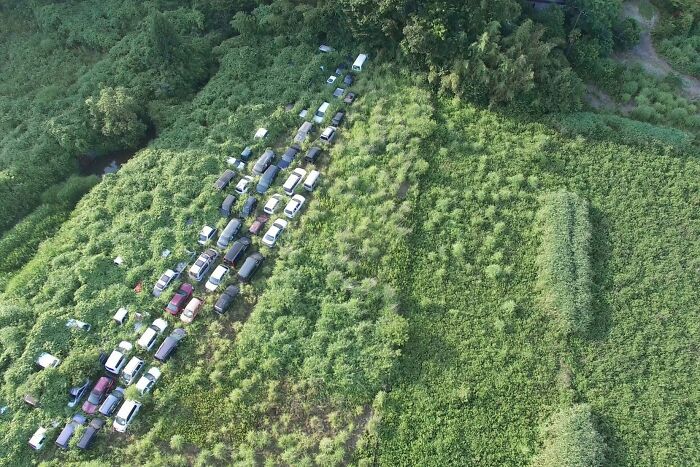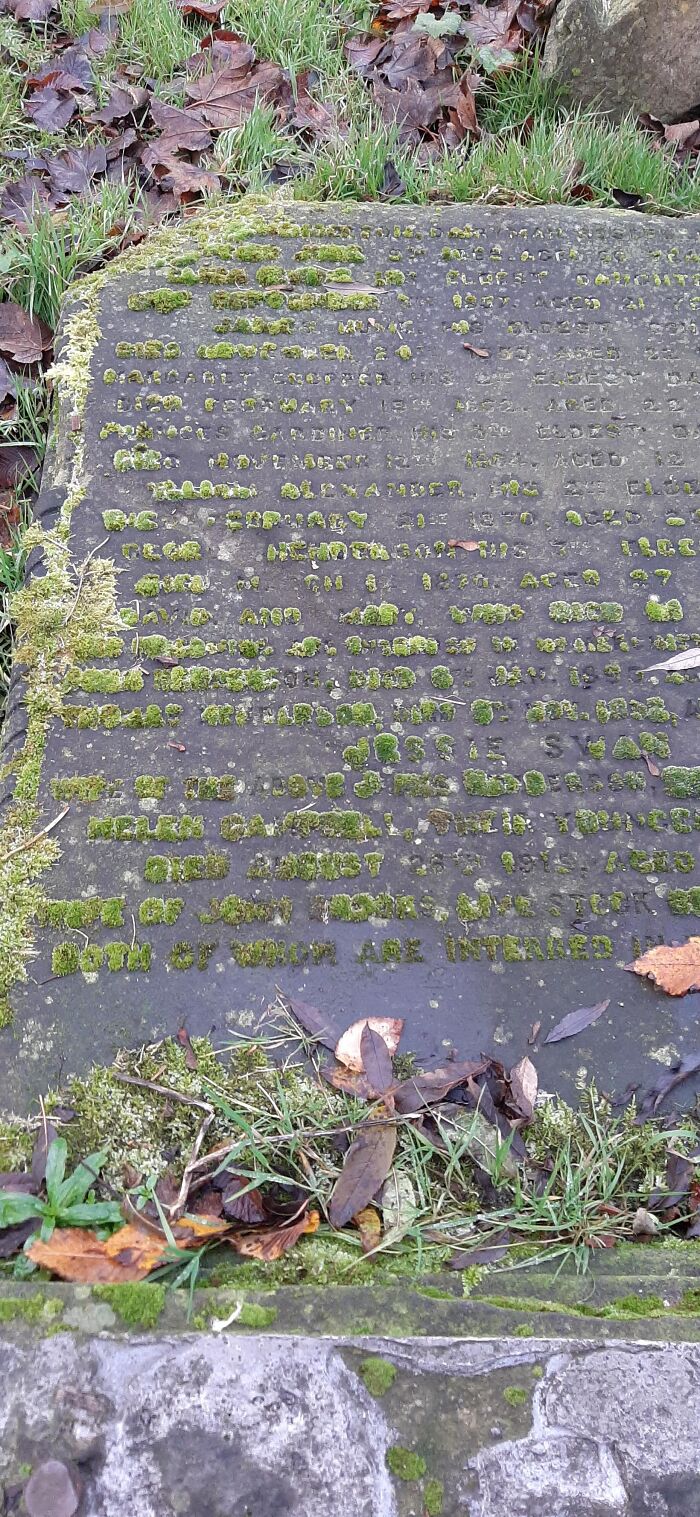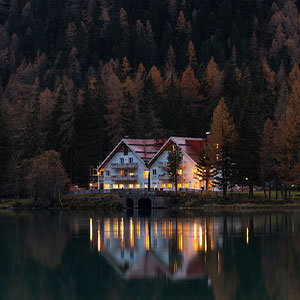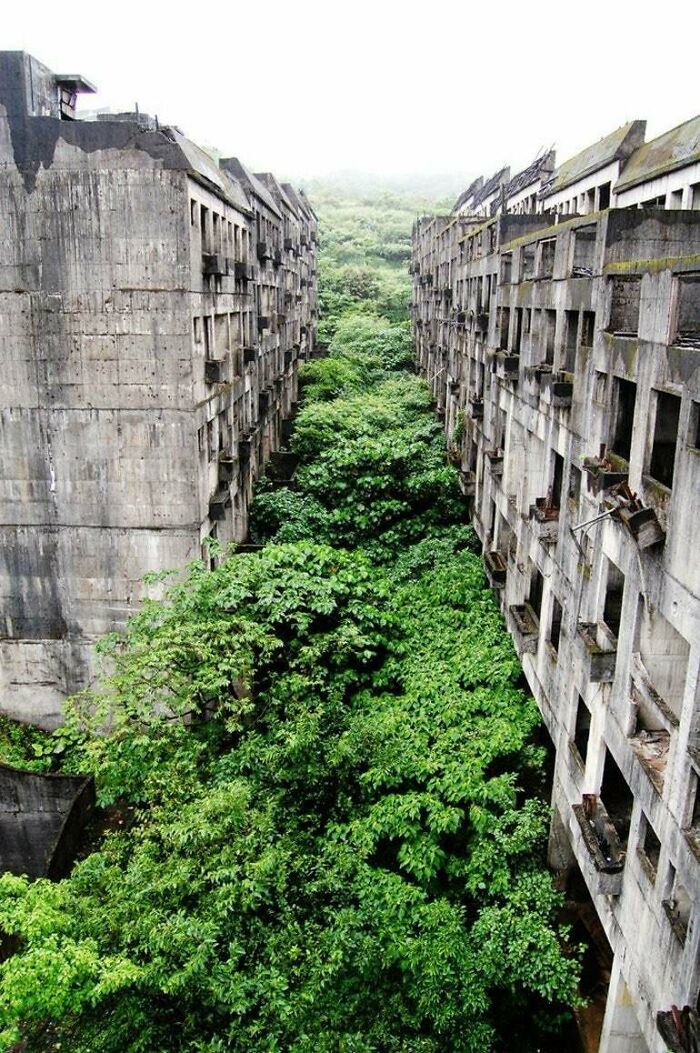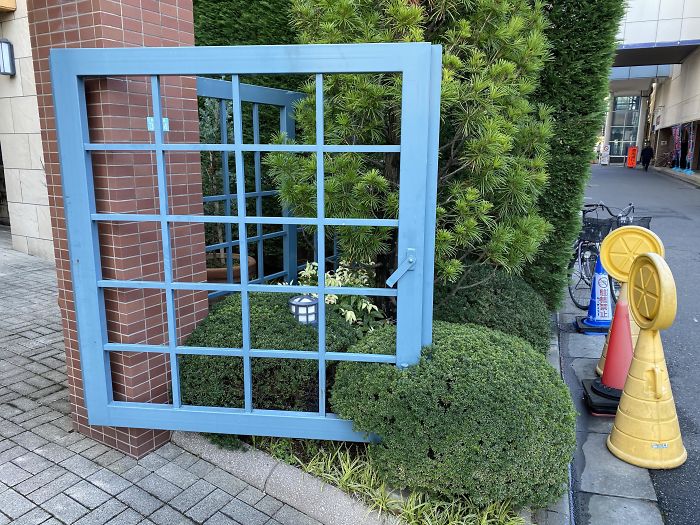We humans often build roads and bridges, canals and ports, even entire cities at the expense of the environment. But nature isn't planning on giving up. On the contrary, it is determined to persevere, showing just how fragile our creations are.
Maybe you remember our earlier list on Mother Nature reclaiming its territories, maybe not, but time passes and bricks continue to crumble, so Bored Panda decided to refresh your memory on the topic.
We put together a new batch of photos to show that nature is a force to be reckoned with and that ultimately, the world belongs to it. As much as we would like to think otherwise.
This post may include affiliate links.
Tree That Grew From The Inside Of An Abandoned Chimney
A cool example of how nature takes back what rightfully belongs to it is Tikal, one of the most famous remnants of the Maya civilization. When author and journalist Alan Weisman hiked through the surrounding region, he discovered something fascinating on his way: "You're walking through this really dense rainforest, and you're walking over hills," Weisman told Live Science. "And the archaeologists are explaining to you that what you're really walking over are pyramids and cities that haven't been excavated."
We know about sites like Tikal because humans have gone to great efforts to dig up and restore their remains. Meanwhile, countless other ruins remain hidden, sealed beneath forest and dirt. "It's just amazingly thrilling how fast nature can bury us," Weisman said.
The Gate Keeper At The Abandoned Putzar Castle In Germany
Found This Beautiful Tree Growing Inside An Abandoned Silo While I Was Exploring
This scene from Guatemala's rainforest allows us a glimpse of what our planet could look like if humans were no more. Lately, have been getting snippets of this idea, as the global COVID-19 pandemic has kept people inside, encouraging animals to return to our quieter urban environments. Weisman, who wrote The World Without Us, spent several years interviewing experts and systematically developing scenarios that would unfold in our planet if we disappeared.
This Chinese Fishing Village Was Abandon In The 1990s. Nature Has All But Reclaimed It (Houtouwan, China)
Old Shiva Temple Firmly Embraced By The Sacred Bodhi Tree In Bangladesh
In his research, Weisman started by taking a look at cities, where some of the most dramatic and immediate changes would occur, thanks to a sudden lack of human maintenance. Without people to run pumps that divert rainfall and rising groundwater, the subways of huge sprawling cities like London and New York would flood within hours of our disappearance. "[Engineers] have told me that it would take about 36 hours for the subways to flood completely," he said.
This Tree Grew Inside The Stop Sign
Railroad Tracks In The Forest (Taiwan)
Without human oversight, glitches in oil refineries and nuclear plants would go unchecked, likely resulting in massive fires, nuclear explosions, and devastating nuclear fallout. "There's going to be a gush of radiation if suddenly we disappear. And that's a real wildcard, it's almost impossible to predict what that's going to do," Weisman explained.
In the wake of our demise, we would also leave behind mountains of waste — much of it plastic, which would likely persist for thousands of years, with huge effects on wildlife.
This Vine Climbed Up A Chair To Silence My Wind Chime
Boat Wreck Reclaimed By Nature And Turned Into An Island
Persistent organic pollutants (POPs) — human-made chemicals such as PCBs that currently can’t be broken down in nature — would also leave a mark. "Some of these POPs may be around until the end of time on Earth. In time, however, they will be safely buried away." The combined rapid and slow release of all the polluting waste we leave behind would undoubtedly have damaging effects on surrounding habitats and wildlife, however, that doesn't necessarily mean total destruction: one quick look at the rebounding of wildlife at the site of the Chernobyl nuclear disaster shows that nature can be resilient on short timescales, even under such extremes.
Meanwhile, petroleum waste that spills or seeps into the ground at industrial sites and factories would be broken down and reused by microbes and plants in just a few decades.
Abandoned Synagogue
Abandoned Castle In Ireland
Real Grass Growing Through The Fake Grass
With all that polluting legacy unfolding, water running underground in cities would corrode the metal structures that hold up the streets above subterranean transport systems, and whole avenues would collapse, transforming suddenly into mid-city rivers, Weisman said.
Over successive winters, without our regular de-icing, pavements would crack and provide new niches for seeds to take root — carried on the wind and excreted by overflying birds — and develop into trees that continue the gradual dismemberment of pavements and roads. The same would happen to bridges. Add some general degradation and these structures could collapse within a few hundred years.
A Friend Found This Out Hiking And Posted It On FB, Thought It Was Pretty Cool
I'm assuming the fabric and padding created a moist coarse surface for the moss to exploit.
It's a sad reflection on our society that even muppets can be murdered and dumped in the woods. Netflix docuseries coming soon
The Roots Grow According To The Pavement Pattern
An Agave Growing Massive In This Long-Abandoned Greenhouse
Found A Tree Growing Through A Stone Wall
Tree: "I'll just squeeze through here..." * inhales, tucks branches in*
With all this fresh new habitat opening up, nature would march in, pasting over the formerly concrete jungle with grasslands, shrubbery, and dense stands of trees. Weisman said that would cause the accumulation of dry organic material, such as leaves and twigs. "Fires are going to create a lot of charred material that will fall to the street, which is going to be terrific for nurturing biological life. The streets will convert to little grasslands and forests growing up within 500 years," he said.
Tree Growing Around A Hiking Sign
130,000-Year-Old Neanderthal Skull Encased In Stalagmites, Found In A Sinkhole In A Cave In Italy
Abandoned Bridge In New Zealand
I like the thought behind this. People obviously needed to cross at this place urgently enough to build a bridge. And then they didn't.
This Tree Has Grown Round The Railing
According to Weisman, buildings would degrade from hundreds of years of damage from erosion and fire. The first to topple would be modern glass and metal structures that would shatter and rust.
On the other hand, "buildings that will last the longest are the ones made out of the Earth itself" — like stone structures, Weisman added. But even those would ultimately become a softened version of themselves: the defined, iconic skylines we know so well today would disappear.
Ghostly Overgrown Villa In Germany
It's sad, that most of these places are in Germany, or somewhere in that area.
Old Abandoned Tracks
This Oak Tree Growing Through A Railing
Earth might eventually become lusher and more diverse — but we should also address climate change, arguably humanity's most indelible impact on the planet. Weisman said that making useful predictions about what will unfold can be tricky. For example, if there are explosions at industrial plants, or oil or gas wellheads that continue to burn long after we're all gone, huge amounts of heat-trapping carbon dioxide would continue to be discharged into the atmosphere.
But carbon dioxide doesn't stay suspended in the atmosphere forever: our oceans are essential to absorbing vast amounts of carbon dioxide from the air. Of course, there are still limits to how much of it the ocean can take up without its own waters acidifying to unhealthy levels — potentially to the detriment of thousands of marine species.
Becoming One With Nature
Nature Wins Again. Found This While Hiking In Boothbay, Maine
It looks like the tree is about to chew up and swallow the tombstone of mister Alfred Caswell.
This Overgrown Boat We Saw. Nature Ship "Ms Heimliche Liebe"
This Abandoned Greenhouse
Legend has it that if you visit this place at midnight on June 21st you will see the ghost of Mr Robert Lloyd proposing marriage to the ghost of Miss Violet Carstairs on her 21st birthday. Tragically, six weeks later they both died in a freak pruning accident
Taking a glimpse at this imagined future might inspire us to be more mindful of our actions. Weisman sees an inherent value to visualizing a world without us. That is why he decided to write his book in the first place. He explained that when he started out, he was conscious that many people avoid environmental stories because it makes them feel bad about contributing to the damage we're doing to the planet, and how in turn, that's hastening our own demise. "I found out a way to get rid of the fear factor was just to kill [humans] off first," he said.
This Plant Has Been Trying To Stealthily Steal My Broom For Months
Mossy Initiation Path In The Quinta Da Regaleira, Portugal
Honest question...What would have been the purpose for building this?
Radioactive Cars From The Fukushima Disaster Slowly Being Eaten By Nature
House Abandoned And Retaken By The Desert In California
Quasi-Legible Moss Growing In The Letters Of This Fallen Tombstone
A Piano Left To Nature
Fern Growing Under A Circular Roof Hole
Abandoned Roller Coaster Being Taken Over By Nature
Nature Took Over. 1965 vs. 2012
Ivy Overtaking A Car
Abandoned Place Reclaimed By Nature
MS World Discoverer Was A German Expedition Cruise Ship. It Hit A Uncharted Reef In The Sandfly Passage, Solomon Islands, 29 April, 2000
Abandoned Tank
Took My Dad To See If His First Car Was Still Where He Left It When Its Engine Seized - 40 Years Ago. It Was
A Tree Somehow Growing In A Mexico City's Pedestrian Bridge
This Blanket Has Been Sitting Since October. A Species Of Creeping Ivy Started Growing Through It, But Only Thriving Where The Black Bands Of Color Are
While My Sister Was On A Long Business Trip An Outdoor Plant Grew Indoors Through A Locked Window
This Tree Swallowing A Trespassing Sign
Apartment Complex In Keelung, Taiwan Slowly Overtaken By Trees
Tree That Grew Through And Around A Wagon Wheel
This Gate Has Been Open For So Long That A Bush Has Grown Around It
Abandoned Paper Mill With Nature Starting To Take Over
Hotel In Southern Europe
Note: this post originally had 118 images. It’s been shortened to the top 50 images based on user votes.
Wholesome post. Sigh......now I want to travel everywhere to see these with my own eyes !
Me too! (as long as i dont have to go into that creepy tricell hospital.
Load More Replies...Best evidence that climate change isn't going to kill the planet. It might kill us, but the planet will survive
A lot of these could have been stills from "Life After People."
Load More Replies...Wholesome post. Sigh......now I want to travel everywhere to see these with my own eyes !
Me too! (as long as i dont have to go into that creepy tricell hospital.
Load More Replies...Best evidence that climate change isn't going to kill the planet. It might kill us, but the planet will survive
A lot of these could have been stills from "Life After People."
Load More Replies...









